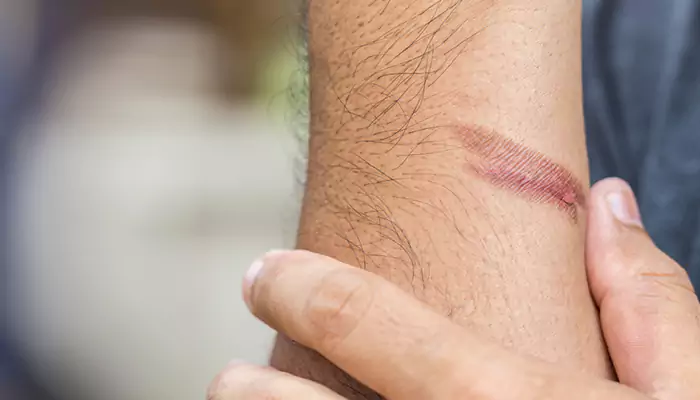Emergency Response – Handling Bleach Spills On Your Skin Like A Pro
In the realm of household cleaning and maintenance, bleach stands out as a potent ally, thanks to its remarkable ability to disinfect surfaces and brighten whites.
- Ishani Karmakar
- 18 March, 2024
- 2 mins ago

Emergency Response – Handling Bleach Spills On Your Skin Like A Pro
In the realm of household cleaning and maintenance, bleach stands out as a potent ally, thanks to its remarkable ability to disinfect surfaces and brighten whites.
However, its strength is also its potential hazard, especially when it comes into contact with skin. Understanding the immediate steps to take following a bleach spill on your skin is crucial for minimizing harm and preventing long-term damage. Let’s delve into a comprehensive, data-backed guide on handling bleach spills, blending scientific insight with practical advice to empower you with knowledge and confidence in such emergencies.
The Nature of Bleach
Bleach, primarily composed of sodium hypochlorite (NaOCl), is a strong base with a pH level ranging between 11 and 13, making it highly corrosive. Upon contact with skin, it can cause irritation, burns, and in severe cases, dermatitis. The extent of damage is influenced by the concentration of bleach and the duration of exposure.
Immediate Actions – The First 60 Seconds
The first 60 seconds after a bleach spill are critical. Here's a step-by-step guide to mitigating the effects:
Rinse Immediately
Flush the affected area with lukewarm water for at least 15-20 minutes. This dilutes the bleach and helps to wash away the chemical. Avoid using hot water, as it can increase skin absorption of the chemical.
Remove Contaminated Clothing
Carefully remove any clothing that has bleach on it to prevent further skin exposure.
pH Neutralization
If available, gently apply a weak acid, such as diluted vinegar (acetic acid) or lemon juice, to help neutralize the bleach. Follow this by another rinse with lukewarm water. This step should be approached with caution, as it may not be suitable for all cases, especially if the skin is already damaged.
Dry and Cover
Pat the skin dry with a clean towel and cover the area with a sterile bandage if necessary. Avoid using creams, ointments, or lotions immediately after rinsing, as these can trap remnants of bleach against the skin.
Aftercare and Monitoring

Post-exposure care is essential to ensure proper healing and to monitor for any signs of complications:
Hydrate the Skin
After the initial emergency response, use a fragrance-free moisturizer to soothe the skin. Look for products containing ceramides or hyaluronic acid, which support skin barrier repair.
Monitor for Infection
Keep an eye on the affected area for signs of infection, such as increased swelling, redness, warmth, or pus. If any of these signs appear, seek medical attention promptly.
Medical Consultation
In cases of severe exposure or if the skin shows signs of burns, it's crucial to consult a healthcare professional. They may prescribe topical steroids to reduce inflammation or recommend further medical treatment.
Prevention and Safety Measures
Preventing bleach exposure is paramount to ensuring safety while using this powerful cleaning agent. Here are some practical tips:
Use Protective Gear
Always wear gloves and, if possible, long sleeves and trousers to minimize skin exposure when handling bleach.
Proper Ventilation
Work in a well-ventilated area to avoid inhaling fumes, which can also cause respiratory irritation.
Read Labels and Follow Instructions
Familiarize yourself with the product's instructions and safety warnings. Using bleach in accordance with manufacturer guidelines can significantly reduce the risk of accidents.
Handling bleach spills on your skin with professionalism and promptness is essential to prevent injury and ensure safety. By following the immediate steps of rinsing, neutralizing, and aftercare, individuals can effectively mitigate the harmful effects of bleach. Moreover, adopting preventive measures and responsible use practices significantly contributes to a safer environment.










